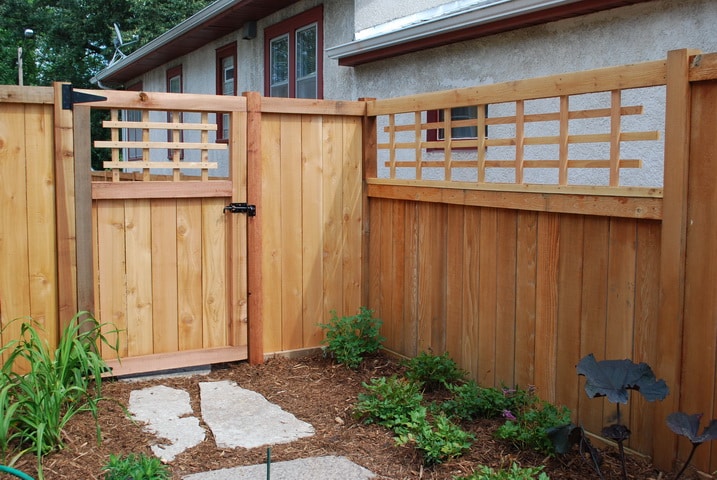
Any one of the most popular wood fence choices, including Douglas fir, southern yellow pine, spruce, cypress and redwood, can be used to create an attractive border for your property. However, for many homeowners and fencing contractors alike, cedar is the preferred choice.
Why is cedar so popular? Is it the right building material for your fence?
Cedar Makes for a Highly Durable Wood Fence
You want your fence to have a long lifespan, right? Cedar is a strong and durable wood – so your fencing will stay in place, sturdy and straight, for many years into the future.
Cedar fencing lasts for such a long time due to the wood’s natural oils. These oils help make it resistant to rot, decay and the effects of weather. And, because of the oils, this wood is also naturally less vulnerable to insect infestations than many other types of wood used in fencing.
Cedar is a Beautiful, Yet Versatile Wood Fence Material
The natural oils found in this species of wood offer more than protection from the elements; they also help preserve its appearance. Cedar fences age nicely, keeping a beautiful look year after year without the need for much maintenance.
The texture and grain of cedar is gorgeous on its own. But, as this wood is free of pitch and resins, it can accept a wide range of finishes. A light-colored bleach could give an aged patina look to your wood fence. Or, you could consider a traditional solid color or an elegant dark stain.
Cedar is ideal for holding finishes and stains, and many different treatments are available that can embellish or enhance the wood to provide a unique look. And, some many types of treatment offer further protection, prolonging the life of your fence.
Cedar Makes Your Wood Fence Eco-Friendly
Are you environmentally conscious? If so, this may be the material for you.
Cedar has a low carbon footprint, as it is a sustainable resource. It is sourced from responsibly managed and certified forests located in Idaho, Montana, Oregon, Washington and British Columbia. These forests are replanted immediately after the lumber is harvested. According to the Western Red Cedar Lumber Association, about 8 million cedar seedlings are planted every year.
In addition, for Idaho, Utah and Wyoming fence projects, this wood can be less costly to transport than some other fencing products, as the source of the material is close by, geographically. Cedar is also relatively light weight, meaning fewer fossil fuels are used in delivering and handling the fencing.
Is cedar the right choice for you? Contact the experienced professionals at Outback Fencing today to learn more. We serve both commercial and residential customers throughout Idaho, Utah and Wyoming. Contact us today to schedule a consultation to discuss our plans for a new wood fence.

